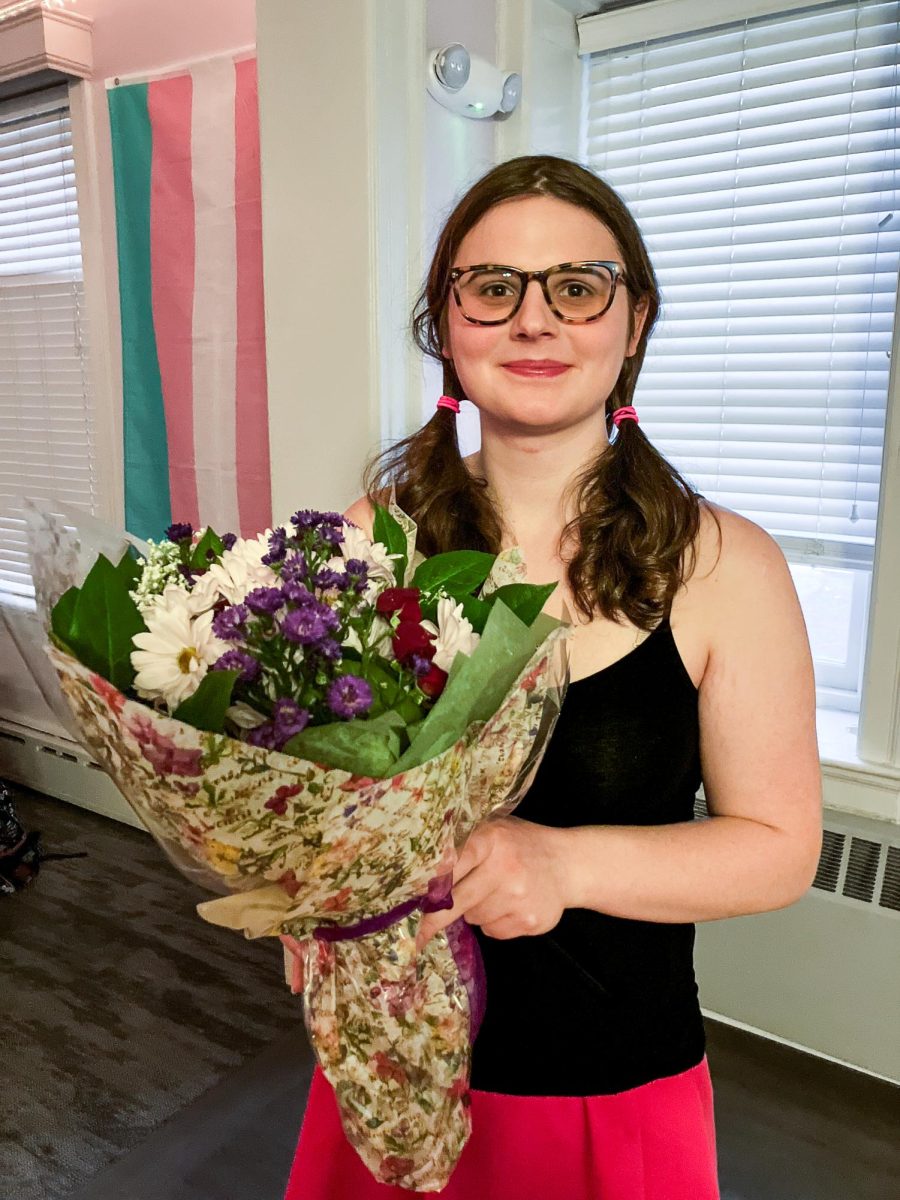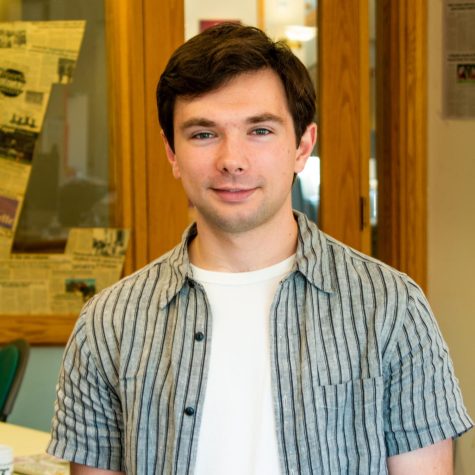Historic Easton Cemetery staff call for partnership with Lafayette due to financial burdens
Numerous Lafayette alumni, including the founder of the college and several past presidents, are buried in the Easton Cemetery. (Photo by Pierson White ’24)
December 3, 2021
Located just across the Bushkill Creek for nearly two centuries, the Historic Easton Cemetery’s future is uncertain. The staff is facing financial difficulties resulting from changing burial practices and high maintenance costs.
Located at 401 North Seventh Street, the Easton Cemetery was established in 1849 amid the American rural cemetery movement, a trend in the 19th century when developers established cemeteries in rural areas for public health and aesthetic purposes. In addition to its picturesque views and its wide range of funerary artwork, the cemetery is noteworthy for its history, which mirrors that of the Lehigh Valley and the United States as a whole.
Among the 29,000 buried in the Easton Cemetery, a visitor can find a signer of the Declaration of Independence and veterans of wars dating back to the American Revolution. With a rich history and status as one of the few rural cemeteries in the region, it was placed on the National Register of Historic Places in 1990.
According to Kay Wolff, a volunteer at the cemetery, just as many people visit the cemetery for its heritage, native plants and landscape as to mourn the dead. In addition to those with family buried there, she noted that joggers, dog-walkers, genealogy researchers, veteran organizations, school groups and individuals who want to enjoy the outdoors all stop by.
“We are so different from what most people think of as a cemetery,” Wolff said.
But despite its deep connection with the Easton community and historic importance, the Easton Cemetery is facing financial trouble. According to the cemetery’s Superintendent Jeff Mutchler, the problems facing the land reflect larger societal shifts that have impacted most cemeteries.
As it becomes increasingly less common for families to remain generation after generation in the same town, he noted that family burial plots are no longer bought as often as individual graves. Since some of the proceeds from the sale of a grave typically go into an interest-bearing account that supports the cemetery financially, the decreased sale of graves is putting financial stress on the cemetery.
Additionally, cremation–which is less expensive than a full burial and service–is becoming more popular, contributing to the cemetery’s loss of revenue. These developments, paired with the necessity of keeping up with fixed costs associated with maintaining the cemetery grounds, create budgetary problems.
“We’ve [maintained the cemetery] through cutting costs, cutting manpower, maintaining versus growing. And we always defer our expenses and try to make it so that we can try to stay within a budget. But unfortunately, with all these things lining up…[we] end up running in the red for a long time,” Mutchler said.
In the past, the cemetery has received financial help from government bodies such as the Pennsylvania Historical and Museum Commission, but this has not guaranteed their financial security. Mutchler explained that most financial aid comes in the form of matching grants which must partially be repaid. Many grants only apply to specific projects instead of general operation costs, so it is not entirely helpful.
While community-led donation drives have helped raise funds and are appreciated by the cemetery staff, they do not generate enough money in comparison to the overall budget. As a non-profit, Mutchler noted that all the money earned by the cemetery is dedicated for maintenance.
“There are times when we [the staff of five to six, depending on the season] get really busy and we have to let things go and catch up later when times are slower. But it’s really all that we can afford right now,” he said.
Both Wolff and Mutchler see a solution to the financial insecurity of the cemetery in the form of a partnership with a larger, wealthier institution. They noted that a connection with Lafayette College would make sense in light of the two institutions’ shared history.
The Easton Cemetery is the final resting place for the founder of the college James Madison Porter, renowned Professor of English Francis A. March Sr., the college’s first African-American student Aaron O. Hoff, among other Lafayette College presidents, administrators and alumni.
Mutchler envisioned an arrangement in which the cemetery could have access to the interest accrued from a sum of money that doesn’t necessarily need to belong to the cemetery. He noted that a trust fund would be ideal.
“[Find] a place like Lafayette, who had a lot of interest, that could somehow creatively include us. I don’t know what vehicles they use to support–through alumni or through a continuation with the school or granting; I don’t understand all the ways that they might be able to help out in that way. But find large organizations like that,” Mutchler said.
Beyond the possibility of receiving donations from alumni or an official financial connection between the cemetery and the college, Wolff called for increased engagement with the Lafayette community. There are ample chances for students to volunteer in the form of gardening and offering tours, she said. The cemetery is also a great resource for professors, Wolff added. For example, the geology department could benefit from analyzing the different materials of the gravestones in the cemetery.
“I think it would be fun for the Lafayette students to know more about us,” Wolff added.
English Professor Chris Phillips is one faculty member who has brought students to the cemetery. He described the experience of exploring the cemetery grounds and learning about its history as insightful.
“That’s one of the big takeaways from my classes. This is a space that you can enjoy, relax in, learn in. You know, it’s not just a place for the dead,” Phillips said.
Acknowledging that financial insecurity is the largest challenge facing the cemetery, Mutchler wants to be known as someone who helped guide it out of this difficult situation. To that end, he explained the joy of working towards something bigger than himself.
“The one thing that I was attracted to with the Easton Cemetery was to be a part of that history,” Mutchler said.
“When I do things here, I don’t think of you know, ‘let’s fix this because we’ve got something coming next week.’ I fix it because it’s going to be here. The thought of it’s going to be here for another one hundred years or another two hundred years.”


























































































































